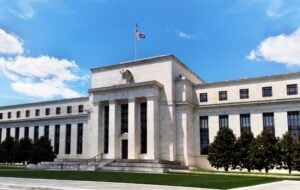Financial exclusion is usually considered a third world problem. But even today, millions of Americans don’t have a bank account or access to formal financial services. In an effort to reach these unbanked Americans, several 2020 presidential candidates, like Bernie Sanders, Elizabeth Warren, and Kirsten Gillibrand, have voiced support for postal banking.
Postal banking is a system in which post offices double as small-scale savings banks offering retail banking services. The proposal targets unbanked citizens, particularly those in rural and low-income areas who lack access to a nearby bank branch. Postal savings accounts would have minimal fees and no minimum balances. Any citizen could make deposits and perform basic financial services at any of the 30,000 post offices around the nation. Even several prominent economists and law professors have recently endorsed the proposal.
Postal banking actually existed in the U.S. from 1911 to 1967. But the policy has returned to relevance 50 years later because of the Treasury Department’s and FDIC’s recent emphasis on achieving universal financial access. Since 2009, the FDIC has conducted extensive surveys every two years to estimate how many people are unbanked. Its 2017 report estimates that 6.5 percent of U.S. households (8.4 million households; 14.1 million adults and 6.4 million children) are unbanked, meaning that no member of the household holds a checking or savings account at a formal financial institution. These figures aren’t high by international standards, but they are high relative to other OECD nations. The unbanked population in Canada, by contrast, is only 0.3 percent.
Would postal banking reduce the number of unbanked Americans? Perhaps. But it’s highly unlikely that it would achieve anywhere near the success that its proponents claim.
To see why, it’s worth digging deeper into the FDIC’s survey to understand the reasons that the unbanked give for why they don’t have a bank account. The three main reasons cited by the unbanked are not having enough money to justify opening an account (52.7 percent), a lack of trust in banks (30.2 percent), and privacy concerns (28.2 percent).
Postal banking wouldn’t do much to address the first concern. Lower account fees might induce some unbanked customers to join (if they actually materialized). But even that seems unlikely. Only one in five respondents in the FDIC’s latest survey cited account fees as being any sort of an obstacle, with less than 10 percent citing them as a major factor.
Similarly, postal banking might make some headway among those who distrust banks. But those who distrust banks are likely to distrust the government as well. This is especially true for those who cite privacy as their main concern or earn a living in the underground economy.
As the survey makes clear, many of the unbanked are unbanked by choice. They are not priced out of the market. The reason they don’t have bank accounts is they don’t want bank accounts. Extending access — via postal banking or some other means — would do little to change that.
If account fees and a lack of trust in banks are truly an issue, a better solution is to level the playing field. Make it easier for trusted non-bank firms who might have a cost advantage in reaching the unbanked to enter the financial-services sector. Removing regulatory barriers to allow telecoms and other non-bank firms to compete with banks has proven incredibly successful in sub-Saharan Africa, where financial-inclusion rates have nearly doubled over the past decade.
Apple has already made its successful foray into the payment-services sector in the U.S. with Apple Pay. Telecoms like T-Mobile and Sprint have announced their intention to offer low-cost digital banking services directly to people’s phones as well. Even Amazon is trying to get into the banking business, offering to use its extensive delivery network to quite literally bring banking services right to people’s doorstep. The FDIC survey shows that the financial-exclusion rate has fallen from 7.7 percent in 2009 to 6.5 percent in 2017. And most of this can be attributed to the rise of new technologies and digital banking.
Relaxing the Know Your Customer and Anti–Money Laundering (KYC-AML) requirements imposed on those providing banking services would also go a long way toward reducing account fees and encouraging competition from non-bank firms. According to a 2016 Reuters survey, financial firms spent on average $60 million per year complying with KYC-AML laws, with larger firms spending upwards of $500 million. These regulations might be necessary in some cases to detect fraud and the financing of terror, but their costs almost certainly outweigh their benefits for small accounts that pose little risk for money laundering or financing terrorist activity. Again, many African nations have enormous success with adopting a “proportional, risk-based approach” to KYC-AML requirements on small accounts geared toward underserved segments of the population.
There is little reason to think a postal-banking scheme would provide better access. The original postal-banking scheme went extinct in 1967 for the same reason the Postal Service is struggling to survive today: it failed to keep up with private competition. As the 20th century progressed, private banks developed a variety of low-risk accounts and money market funds featuring better services and higher returns. Between 1947 and 1966, postal savings had fallen by 90 percent.
Advances in digital banking since 1967 have put the postal banking system even further behind the curve. Jennifer Tescher, president and CEO of the Center for Financial Services Innovation, claims that the Postal Service has “zero capacity, understanding or capability” to offer quality financial services. “The only asset they bring to the table is distribution,” she argues. And distribution is of limited value today thanks to the rise of digital banking.
There might be some benefits from allowing post offices to partner with banks in offering basic services in underserved areas, as Elizabeth Warren has proposed. But those supporting more-ambitious postal-banking schemes offer a costly solution to an ever-diminishing problem. Postal banks were not necessary in Canada, which has achieved a 99.7 percent financial-inclusion rate. They are not necessary in the U.S. either.





